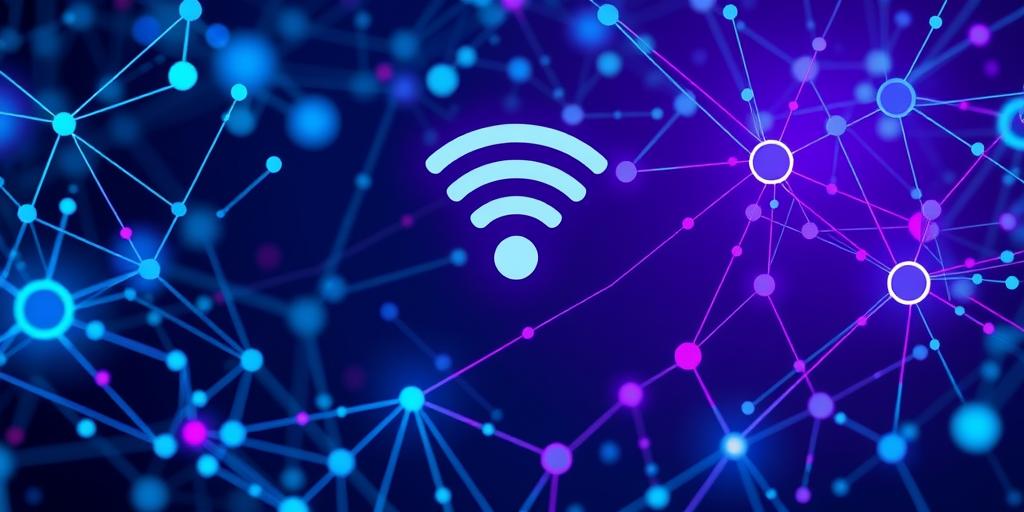Next-Generation Wi-Fi Standards: What to Expect in 2025
The world of wireless internet is in constant evolution, and by 2025, we can anticipate significant advancements in Wi-Fi technology. This article provides an informative overview of the next-generation Wi-Fi standards, focusing on what users and businesses can expect in terms of speed, efficiency, and security.
Current Wi-Fi Standards: A Brief Recap
Before diving into the future, it’s essential to understand the current landscape. Wi-Fi 6 (802.11ax) is now the prevailing standard, offering improved speed, increased capacity, and better performance in dense environments compared to its predecessor, Wi-Fi 5 (802.11ac). Wi-Fi 6E extends these benefits by utilizing the 6 GHz band, reducing congestion and interference.
The Dawn of Wi-Fi 7 (802.11be)
Looking ahead, Wi-Fi 7 (802.11be) is the next major iteration, expected to roll out widely by 2025. Here’s what makes it stand out:
- Blazing Fast Speeds: Wi-Fi 7 promises a theoretical maximum speed of up to 46 Gbps, a significant leap from Wi-Fi 6’s 9.6 Gbps. This means faster downloads, smoother streaming, and reduced latency.
- Multi-Link Operation (MLO): One of the key innovations in Wi-Fi 7 is MLO, which allows devices to simultaneously connect to multiple bands (2.4 GHz, 5 GHz, and 6 GHz). This enhances reliability and reduces latency by seamlessly switching between bands when interference occurs.
- 4096-QAM: Wi-Fi 7 employs 4096-QAM (Quadrature Amplitude Modulation), enabling it to pack more data into the same amount of spectrum. This results in higher data rates and more efficient use of available bandwidth.
- 320 MHz Channels: Wi-Fi 7 supports wider channels of up to 320 MHz, doubling the channel width of Wi-Fi 6. Wider channels mean more data can be transmitted at once, further boosting speeds.
Key Benefits and Use Cases
Wi-Fi 7 is poised to revolutionize various applications and industries:
- Enhanced AR/VR Experiences: Lower latency and higher speeds will facilitate more immersive and responsive augmented and virtual reality experiences.
- Improved Gaming: Gamers can expect reduced lag and smoother gameplay, even in competitive online environments.
- Seamless 8K Streaming: High-resolution video streaming will become more reliable and buffer-free.
- Industrial Automation: In manufacturing and logistics, Wi-Fi 7 will support real-time data transfer and control, enabling more efficient and reliable automation.
- Smart Homes: With more devices connecting to the internet, Wi-Fi 7 will ensure stable and fast connectivity for all smart home devices.
Potential Challenges
Despite its promising features, the adoption of Wi-Fi 7 may face some challenges:
- Cost: Early Wi-Fi 7 devices are likely to be more expensive, potentially slowing down initial adoption rates.
- Spectrum Availability: The full potential of Wi-Fi 7 relies on the availability of the 6 GHz band, which is not universally accessible due to regulatory restrictions in some regions.
- Interference: High-density environments may still experience interference, although Wi-Fi 7’s advanced features are designed to mitigate this issue.
What to Expect in 2025
By 2025, we can anticipate seeing the first wave of Wi-Fi 7-enabled devices, including routers, laptops, and smartphones. However, widespread adoption may take several years as the technology matures and prices decrease. For businesses, early adoption could provide a competitive edge by enabling new applications and improving operational efficiency.
Conclusion
Next-generation Wi-Fi standards like Wi-Fi 7 promise significant improvements in speed, efficiency, and reliability. While challenges remain, the potential benefits are vast, ranging from enhanced entertainment experiences to more efficient industrial automation. As we move closer to 2025, keeping an eye on these developments will be crucial for both consumers and businesses looking to stay ahead in the connected world.
